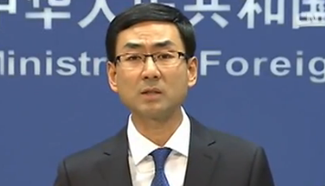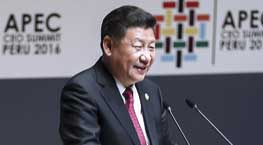SAN FRANCISCO, Nov. 29 (Xinhua) -- A team of engineers has built a prototype chip just three atoms thick and hailed it as a possible way to mass-produce atomically thin materials and electronics.
The team, led by Stanford University electrical engineering Associate Professor Eric Pop, started with a single layer of material called molybdenum disulfide, which has a sandwich-like structure: a sheet of molybdenum atoms between two layers of sulfur.
To manufacture a molybdenum disulfide crystal big enough to form a chip, about the size of a thumbnail, the researchers deposited three layers of atoms into a crystalline structure 25 million times wider than it is thick by making refinements to a manufacturing process called chemical vapor deposition.
The approach, described in the journal 2D Materials, essentially incinerates small amounts of sulfur and molybdenum until the atoms vaporize like soot and the atoms then deposit as an ultra-thin crystalline layer on a substrate.
Next, to pattern the material into electrical switches and to understand their operation, the researchers made use of a recent advance led by Chris English, a graduate student in Pop's lab, who discovered that extremely clean deposition conditions are essential to form good metallic contacts with the molybdenum disulfide layers.
The team then used standard etching tools to cut the Stanford logo into their prototype, as a way to demonstrate how a large-scale, single-layer chip manufacturing process might perform this step in the future.
"We have a lot of work ahead to scale this process into circuits with larger scales and better performance," Pop was quoted as saying by a news release from Stanford, in California on the U.S. west coast. "But we now have all the building blocks."










